The Toronto Coach Terminal is a sorry sight.
Marooned a significant distance from the city’s main railway station, disconnected from other forms of public transit, and pretty much unloved for much of its existence, the two-storey Art Deco structure is a relic from a time when bus travel was the height of sophistication.
Now, 85 years after it opened to the public, the historic building is in trouble. A major development close to Union Station is expected to provide a new central terminal for all GO, Greyhound, Coach Canada, and other bus services, leaving the Bay St. terminal surplus to demand.
That might not seem like such a bad thing. After all, Toronto’s primary intercity bus terminal has been in a rough state for decades. The inside is shabby, uncomfortable, and draughty. For most, it’s not a place to linger and appreciate architecture.
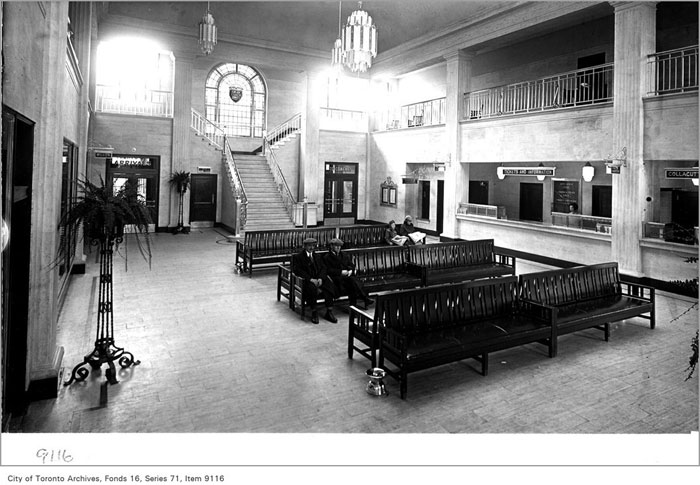
In 2012, the National Post called the heritage listed building “a dank, poorly ventilated covered garage in a forgotten corner of downtown.” Don Verbanac, an instructor at Ryerson University’s School of Urban and Regional Planning, told the paper “[the] facility would not even pass in a third world country.”
Still, despite its obvious lack of charm and numerous shortcomings, the Bay St. bus station remains the point of arrival for many newcomers and first-time visitors to Toronto.
When I first came to this city in as a 20-year-old tourist, it was the bus terminal’s neon-lit interior and ripped seats that greeted me. According my notebook, my friend and I had intended to wait out a rain shower inside before walking to our hostel, but we hated the bus station so much we left immediately.
If we had arrived by train, we would have entered Toronto through the Great Hall of Union Station like kings. Instead, we scurried out onto the streets like peasants.
If our bus had pulled up eight decades earlier, we would have had a very different impression of Toronto’s bus facilities.
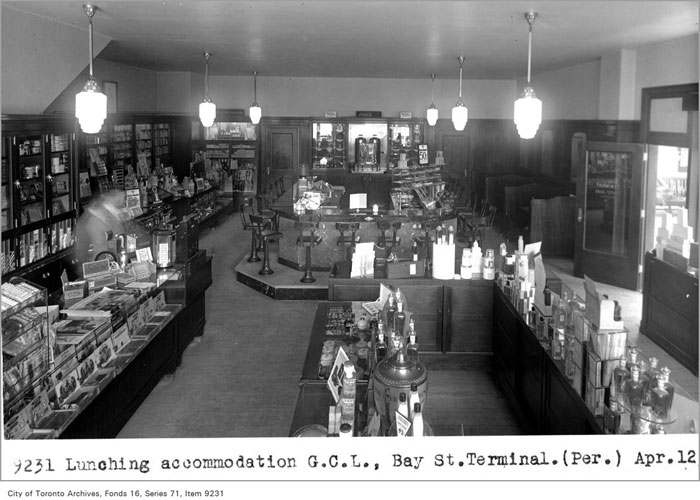
Designed by Charles Dolphin, the architect responsible for the art deco portions of what is now the Air Canada Centre, the Toronto Coach Terminal was designed around the needs of Gray Coach Lines–the TTC’s intercity bus brand.
The company was founded in 1927, and it quickly absorbed a number of smaller operators before finding the cash to put up a luxurious downtown terminal.
Built over a period of just a few months, the new bus station was decorated with polished Travertine stone and equipped with a tidy lunch counter and drug store.
Passengers could buy tickets from a counter in the chandelier-lit main hall and wait on neat rows of wooden benches. On the walls, a giant map of Southern Ontario showed Gray’s various services to towns like North Bay, Penetanguishene, Buffalo, London, and Owen Sound.
“The general effect should be pleasing and serviceable,” the TTC announced in its internal magazine, Coupler. The apparent lack of enthusiasm was perhaps a nod to the Great Depression, which was forcing building projects in Toronto to be scaled back or cancelled entirely.
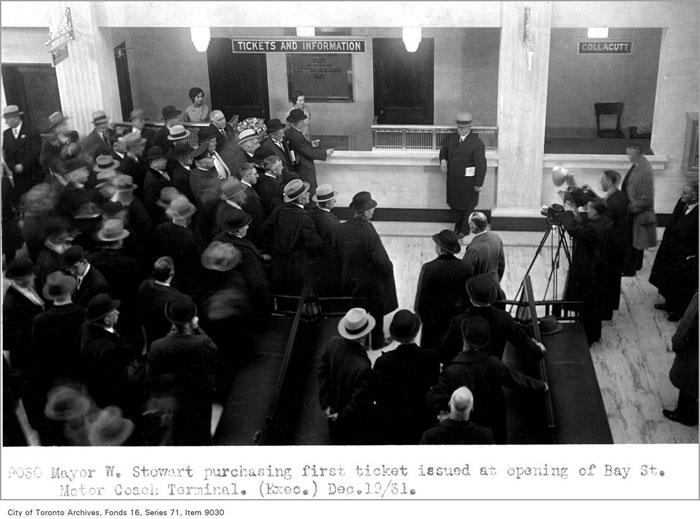
On opening day in December, 1931, Toronto Mayor William James Stewart bought the inaugural ticket (a return to Hamilton) and Acting Premier William Herbert Price cut a ceremonial ribbon attaching the first scheduled bus to the building.
“At a time when long-established transportation agencies are finding it necessary to curtail their services and explore every possible angle of economic operation, motor-coach routes operating in and out of Toronto now have at their disposal all the facilities of a new and modern building, the first structure in Canada to be devoted entirely to the service of motor-coach passengers,” the Globe reported.
“The building is a realization of the fact that motor coach operation has become a permanent branch of public transportation,” the TTC said.
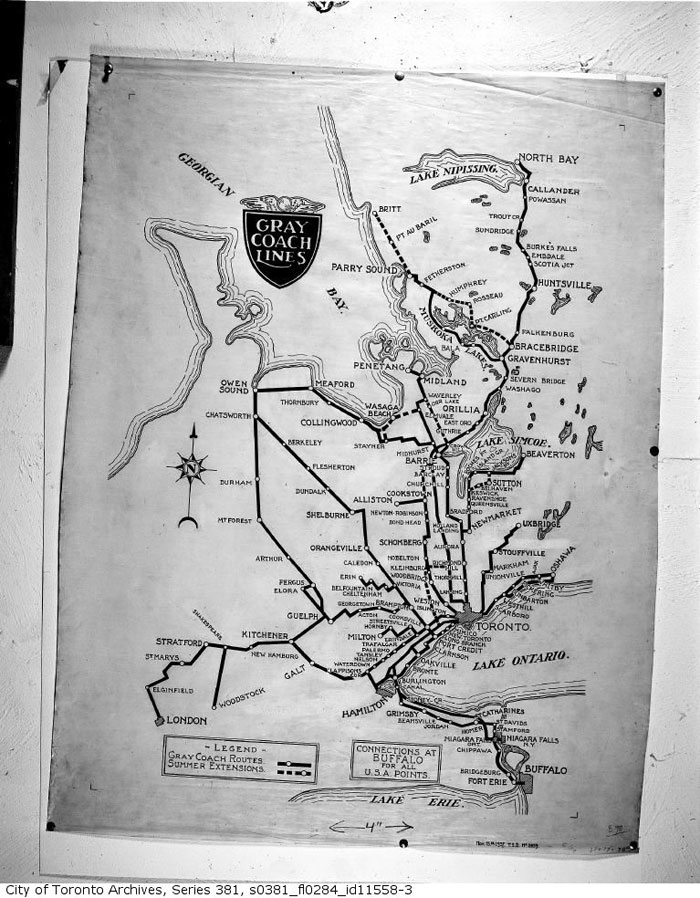
The bus station remained largely untouched into the 1960s. As natural wear-and-tear took its toll, the interior became shabbier. Intercity bus travel lost its lustre, too. Getting between places in cars became easier with the introduction of highways, and air travel became an increasingly viable method of jumping between cities.
In 1988, the TTC undertook a $10 million renovation that increased the overall capacity and added the underground connection to the Atrium on Bay, electronic departure boards, and improved access for wheelchair users. It also gave the building its dire plastic seating and horrendous tiled walls.
Pigeons invaded the waiting room through newly installed automatic doors, so staff had to install nets and spikes as a deterrent.
Today, bus passengers are crowded inside the battered and timeworn interior then gassed with exhaust fumes on dank platforms.
It’s not clear what will become of the old Art Deco structure when the new bus facility at Bay and Lake Shore is complete.
Whatever the future holds, hopefully it involves finding a way to restore the Toronto Coach Terminal to its former glory.
Correction: An earlier version of this story incorrectly stated that real estate company Ivanhoe Cambridge had purchased the Toronto Coach Terminal and was planning a 50-storey office tower. In fact, the tower is planned for 45 Bay St.

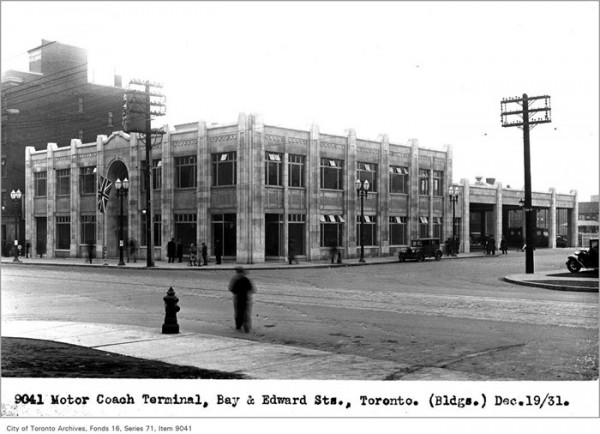


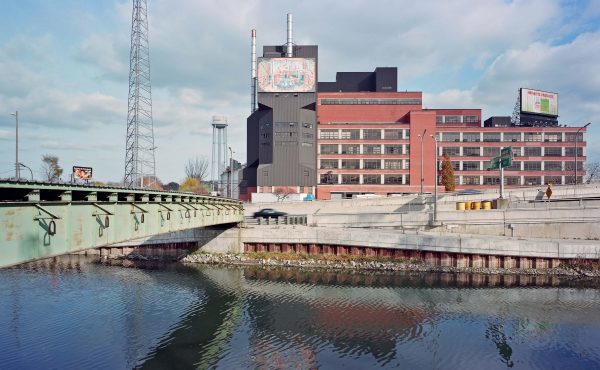
7 comments
This, or Casa Loma, would be great locations for a Museum of Toronto, or even an expanded Toronto Archives building.
I recall reading that the bus terminal was obsolete not long after it was built. You may not like what has become of it it is surprising it still stands.
Back in the ’70s when dad and I lived in Orillia, and mum was in Toronto, they agreed I could travel by train for TO visits because mum refused to go near the bus station. The crowd of types who hung out there was far too sketchy for her to feel safe.
“In 2012, the Toronto Star reported real estate company Ivanhoe Cambridge had purchased the Bay and Dundas site with an eye to building a 50-storey office tower, but so far no development application has been filed with the city.” You may want to actually read that Star article. There are no such reports.
“In 2007, 45 Bay St. was purchased by Ivanhoe Cambridge, the real estate subsidiary of Caisse de dépôt et placement du Québec, a pension-fund managing giant based in Quebec City. A spokesperson for the company said that a 50-storey office tower is planned for the site, and confirmed that the company is talking with various outside parties, but would not divulge details.”
http://www.thestar.com/news/gta/2012/01/07/landmark_bus_depot_loses_its_lustre.html
Both on the 505 streetcar line and <5 minutes to either St. Patrick or Dundas Stations (with an underground connection to the latter). While it's not really the point of your article, the bus station as it is now is a far cry from "disconnected to other forms of public transit." It is a garbage bus station–especially the part where you wait outside in the cold–which gets even better when the lines are so long that they have to shuffle out of the way to let buses actually pass. Merry Xmas Toronto.
Though out of curiosity, does the TTC still own/operate this building or does Greyhound?
I for one am excited by what is happening down at Union. The old bus terminal waiting room will make a nice condo lobby one day, or perhaps a bit of facadism will be able to preserve/restore the exterior. But I’m not going to cry over the loss.
With some renovation and sprucing up, this could be a lovely building. Greyhound allows all its termini to be dismal dumps (have you seen the one in Sudbury?) but the one on Bay Street could become a beautiful space. Keep the front part, cleaned up and restored, with its atrium and staircase and two storeys of shops, offices, etc. Put a higher tower over the bus area at the back to finance it all.
I would be very sad to see this torn down. Let’s hope someone in a position to safeguard it will see its potential.